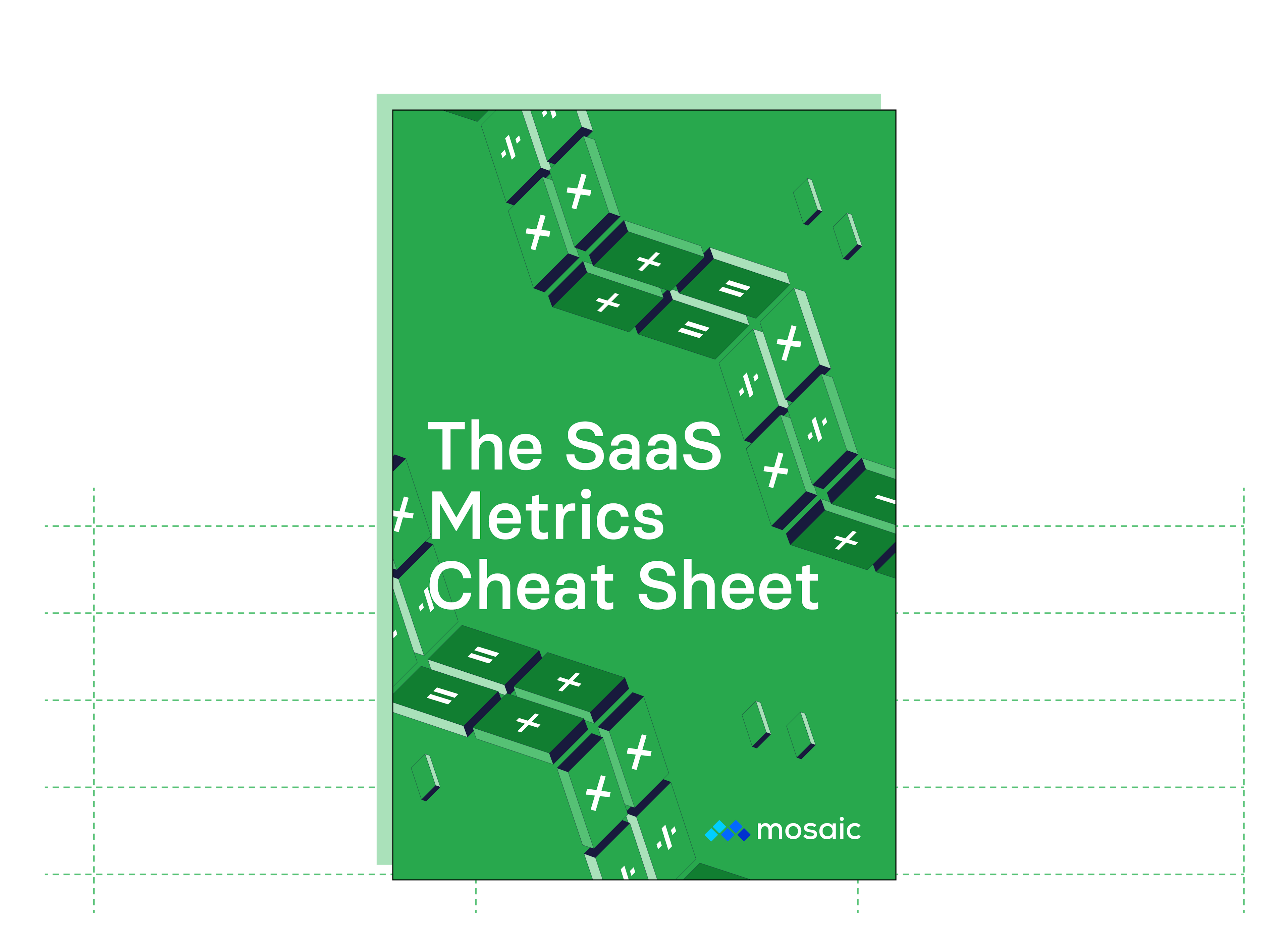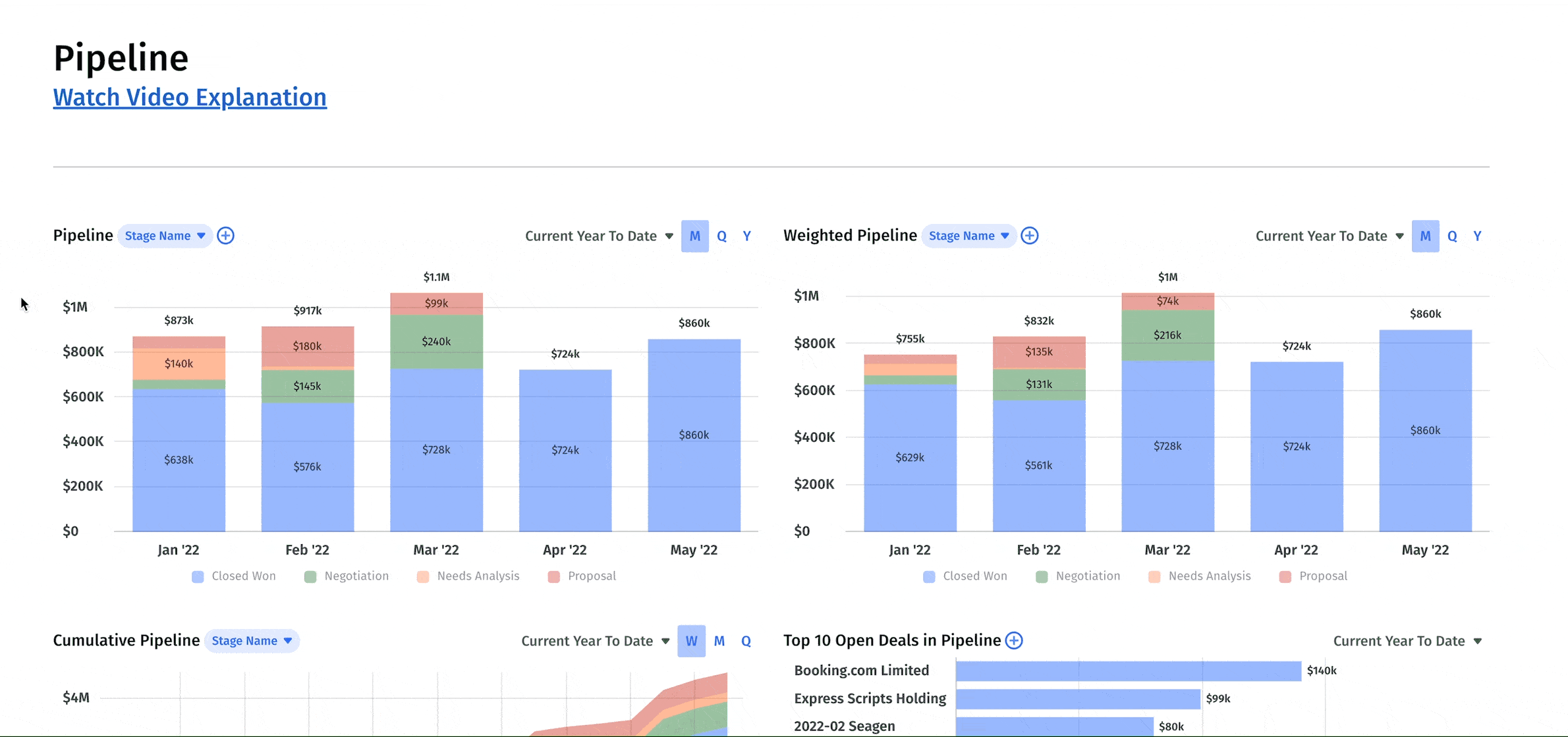There’s often a disconnect between sales, marketing, and customer success in the traditional sales process. There are a lot of moving parts in taking a prospect all the way through the marketing funnel, through the sales process, and out the other side.
Without careful tracking and management, the traditional sales process can lead to missed opportunities, missed revenue, and less alignment with strategic goals, and not to mention, messy customer data.
But why shouldn’t sales, marketing, and customer success all be on the same page? Is it even possible?
RevOps says yes. By consolidating data from your CRM and other systems, RevOps aligns different departments, transforming the customer journey from a disjointed, bumpy ride to smooth, optimized sailing, driving business growth in the process by offering clean customer data ripe for insightful analytics that can help your business grow meaningfully.
For finance teams, improving the sales process through effective RevOps leads to more consistent revenue, deal tracking, and ultimately more accurate forecasting.
Table of Contents
What is Revenue Operations (RevOps)?
RevOps is a business function that aligns sales, marketing, finance, and customer success teams for one common goal: driving revenue as efficiently as possible, from lead to close.
Individual departments have traditionally worked independently, often with different data sets and different objectives. With RevOps, all departments understand the customer lifecycle in the same way, have unified workflows, and track progress against the same metric-based goals.
This has the effect of driving efficient revenue generation, optimizing the customer experience, and speeding up the sales cycle.
RevOps vs. Traditional Sales Operations: A Comparative Look
The typical sales process can be disjointed. The biggest sources of friction are between sales and marketing, and sales and finance.
Marketers may target a slightly different demographic than sales teams. While the sales team might still get conversions, the process isn’t optimized. Clients who aren’t perfectly suited to the product can subsequently lead to high customer churn or lower than expected win rates, less qualified opportunities and the return on those marketing costs isn’t as high as it could be.
For sales and finance, the two departments may have different views of customer trends thanks to siloed data. This leads to messy data, requiring tedious, manual tracking by finance on offline spreadsheets.
It’s an inefficient process that can result in inaccurate revenue forecasts, throwing a monkey wrench into financial plans and budgets.
RevOps is the missing piece. With a dedicated RevOps function, everyone has the same understanding of the sales pipeline, providing clean and accurate data for financial reporting and forecasting.
But the difference between RevOps and the traditional approach to sales has an even more fundamental component.
With a RevOps strategy, finance can build proper financial models with reliable data relating to the customer journey. This includes forecasting with correct assumptions around win rates, sales cycles, sales rep ramp, average contract values, and customer segments. Without RevOps, finance can struggle to properly interpret CRM data. That means flawed understanding of customer attributes, renewal dates, and pipeline.
A RevOps strategy is critical but not always easy to implement.
Get the SaaS Financial Model Template
Building a RevOps Framework
The core of a successful RevOps function is a consistent approach to the way each department works and how they track their performance and results. When building a RevOps framework from scratch, there are some fundamental steps that every company should consider:
1. Audit Existing Processes and Data Quality
The first step in the process is to gain a clear understanding of the current status quo. Identifying all of the current processes in the full customer sales cycle will allow RevOps to see areas of inefficiency, as well as choke points which are creating the potential for inaccurate or incomplete data management.
2. Optimize Processes Including Technology Integration
There should be some clear opportunities to improve the efficiency of the sales cycle and facilitate better data sharing between departments. This optimization will almost certainly include integration of technology, which automates the process, breaking down silos and giving all departments access to the same data.
Not only can the right software help teams work better together, but also aid continuous improvement by facilitating better measurement of performance.
3. Set Key Objectives and KPIs
With some clear views on how to improve business processes, RevOps can collaborate with every department to gain agreement on shared objectives. From there, clear KPIs can be set to measure improvement and progress towards those objectives.
4. Measure Performance
Once the strategy and processes are in place, the revenue operations team is responsible for carefully measuring the subsequent performance. Consistent achievement of the identified KPIs should result in improved financial performance and more accurate reporting and forecasting.
5. Continuously Improve
Even if you achieve positive results, there will always be room for improvement. A valuable RevOps function will always be looking at ways to improve processes and integrate new technology to improve performance.
RevOps Challenges and Solutions
RevOps can prevent revenue leakage and provide a more accurate view of revenue growth. But it’s not always easy to get a solid RevOps process in place. Three challenges include collaboration, CRM hygiene, and tracking results.
Collaboration
The main aim of RevOps – inter-departmental collaboration – is usually the most difficult to achieve. To get sales, marketing, and customer success working together, you need a single source of truth, one where everyone is “speaking the same language.”
The best way to do this? Leveraging financial software that integrates your CRM, so that everyone is looking at the same holistic, granular view of your sales pipeline metrics. You should also start slimming down the amount of tools you use – separate tools across departments can entrench data silos.
CRM Hygiene
A successful RevOps strategy depends on making sense of data sourced from your CRM. But that’s impossible to achieve when it’s filled with duplicate data or inconsistent contract versions.
RevOps requires a solid approach to CRM hygiene. To eliminate errors, leverage automation. A clean CRM setup should mirror the financial customer journey.
Keep things relatively simple and streamlined – while you want the necessary data for finance and RevOps to dig into, you don’t want to risk frustrating sales teams. You’ll also want to clearly differentiate between contract renewals and new opportunities.
Trouble Tracking Results
Once you’ve put a RevOps process in place, you need to know if it’s actually performing as advertised and shortening your sales pipeline. To do this, keep track of sales performance metrics like customer acquisition cost, sales pipeline velocity, and win rate.
But these metrics can be difficult to calculate, especially if you’re working out of spreadsheets.
Leverage a tool that connects with your CRM to calculate revenue and operational metrics in real time. This way, they can serve as a guidepost for shifting sales, marketing, and customer success strategies.
For the most useful data, you want to get granular — view not only net revenue retention, for instance, but net revenue retention by customer segment. Look for tools that allow you to dig into the details and build customized strategies for your business.
10 Key Metrics to Track in RevOps
RevOps centers on sales pipeline metrics that demonstrate the efficacy of your sales, marketing team, and customer retention efforts. Some of the most important include:
- Customer Acquisition Cost
- Opportunities Created
- Win Rate
- Net Revenue Retention
- Bookings Up For Renewal
- Sales Velocity
- Average Sales Cycle
- Sales Rep Ramp
- Sales Funnel Conversion Rate
- Annual Recurring Revenue
Download the SaaS Metrics Cheat Sheet

Mosaic’s Impact on RevOps
At the end of the day, successful RevOps depends on two components. The first is a complete, granular view of your end-to-end sales process. The second is collaboration between sales, marketing, finance, and customer success.
A granular view of your sales process requires a clean CRM and accompanying metrics. But calculating metrics each month can be tedious. Spreadsheets compound the problem by opening the door to errors – flawed metrics can lead you in the wrong direction.
Mosaic streamlines the process by performing calculations of critical metrics like ARR or win rate for you. And, since data from your CRM is recorded automatically, there’s no need to worry about flawed data.

But there’s more to your business than your CRM. For a complete picture, you require integration with your HRIS, billing system, and ERP, to name just a few. Sales rep ramp rate, for example, requires data from your HRIS to help understand when reps joined the company.
Mosaic provides a consolidated view across your tech stack, so you can see in real-time how each piece of your company is moving together.
But, gathering data is only the first step. Mosaic helps you transform it into strategic insights. For instance, by assessing your historical win rate, you can project near-term bookings. For a long-term view, Mosaic sources both CRM and HRIS data to help build sales capacity models.
Mosaic also makes it simple to drill down into specific metrics, and then analyze them by customer cohort. For instance, you might want to assess your pipeline by stage and view customers who make up the deals. Once you have the data in hand, you can display it in beautiful, easy-to-understand dashboards that make the second component of RevOps – collaboration – much easier.
Some of the most important sales dashboards for RevOps include the pipeline analysis, sales cycle, and sales team performance dashboard. In Mosaic, these dashboards update in real time, helping sales, marketing, and customer success make data-driven, informed decisions.

Charts like the sales pipeline waterfall chart complete the picture by showing specific insights into your pipeline — in this case, how potential bookings values move in and out of your pipeline month-to-month or quarter-to-quarter.
Ultimately, all of this additional oversight flows through to your financial forecasts, improving their accuracy and reliability.
Real-World Success: How Mosaic Drives RevOps Efficiency
Galley, a startup focused on inventory management in the food industry, is a great example of how successful RevOps implementation can transform a business. When Galley first got started, they were tracking KPIs in spreadsheets. This quickly became too time-consuming and tedious, so Galley began outsourcing these spreadsheet models.
It didn’t take the startup long to realize using spreadsheets was creating unnecessary overhead.
Jason Peretz, Galley’s Chief Business Officer & VP of Legal, recalled seeing a Mosaic demo and thinking “That’s what we need!”
By integrating Quickbooks, HubSpot, and Stripe with Mosaic, Galley was able to begin performing in-depth revenue and pipeline analytics.
“Because deploying Mosaic pushed us to first clean up our HubSpot data,” said Jason, “We can go back to see historical data, slice our ARR by market types…see net dollar retention by customer types, customer segments, and more.”
Supercharge RevOps With Mosaic
RevOps isn’t just a buzzword – it’s a strategic approach that has the power to optimize your go-to-market strategy and drive revenue growth. And, really, it’s common sense. Why wouldn’t marketing, sales, and customer success work together? Why wouldn’t you leverage your own CRM data to guide sales strategies?
There’s a reason RevOps has become so popular – it works. But, to make it a reality for your own company, you need the data in a centralized location where teams can meet.
Bring alignment into focus with Mosaic – request a demo today.
RevOps FAQs
How can Mosaic's software enhance a company's RevOps?
By integrating with your CRM, Mosaic provides a clear view of your sales pipeline and helps you build accurate top-line models. It also calculates some of the most important metrics like ARR and win rate for you, helping avoid tedious spreadsheets.
What metrics should be tracked to measure RevOps success?
What are common challenges in implementing RevOps?
Own the of your business.

